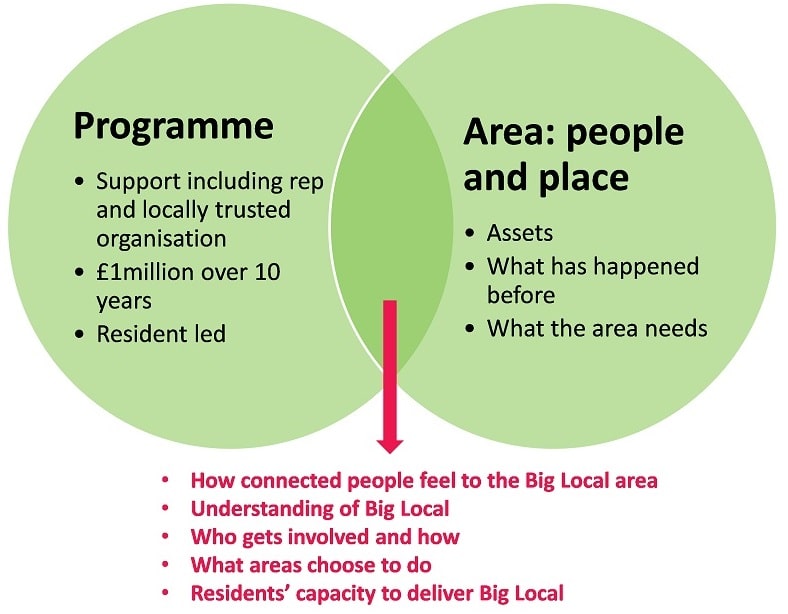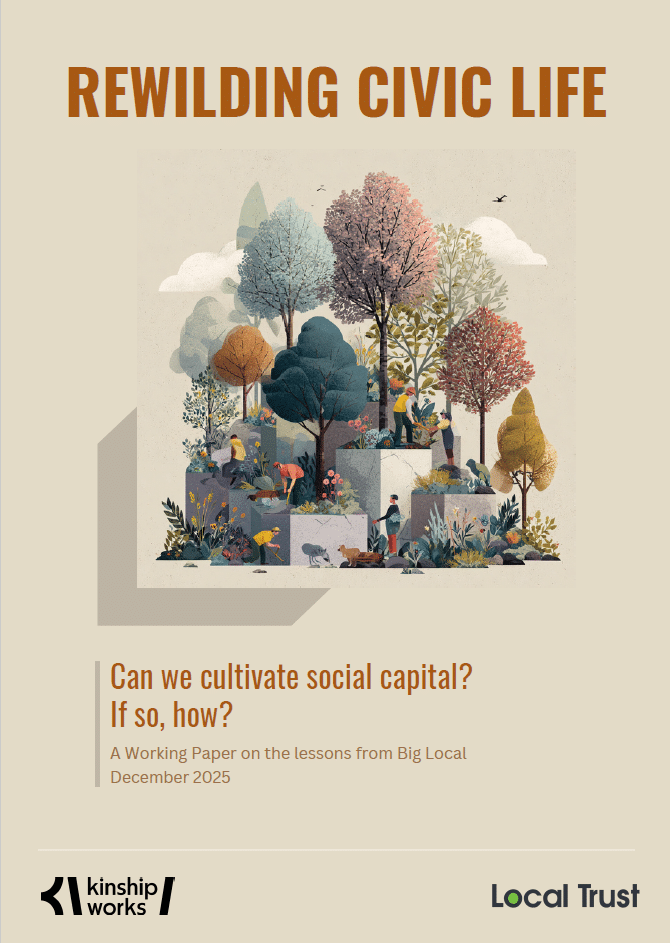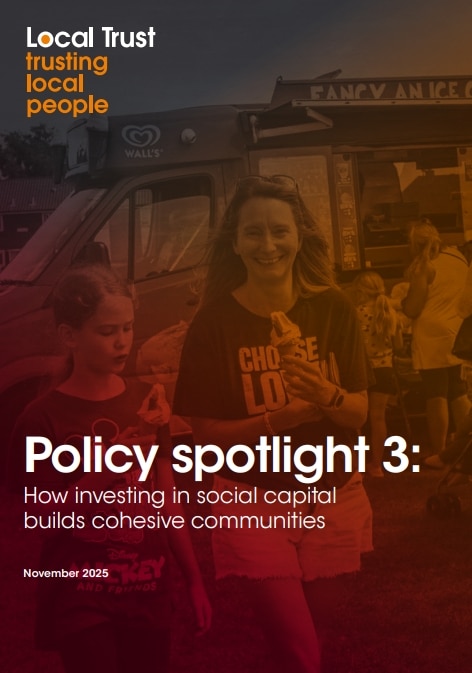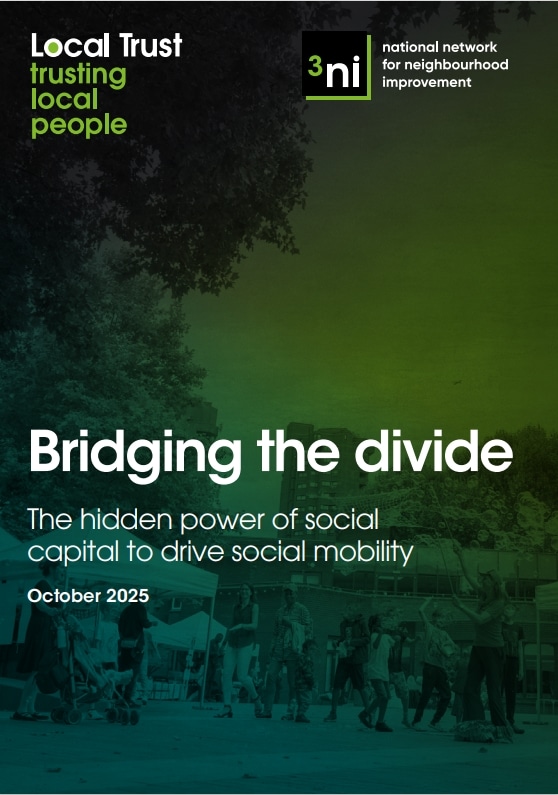Influences on the development of Big Local areas 2013-14
Understanding how Big Local is developing in areas and what influences progress by studying 14 Big Local areas between June and October 2013.

Summary
About the research
Local Trust is keen to learn about what makes Big Local work. To help with this, CDF were asked by Local Trust to explore how Big Local is developing in areas and what influences progress. We visited 14 Big Local areas between June and October 2013. In each area we held a focus group with residents who are actively involved, and interviewed representatives of the locally trusted organisation, other organisations that supported Big Local in the area and Star People. We also sent an online survey to one actively involved resident in 145 Big Local areas and 101 residents replied. This summary outlines what people told us during this research.
What do people think of Big Local?
People understand Big Local – they see it as a resident-led, long term opportunity to bring hope and change to their communities. Big Local is seen as different to other programmes because it involves resident-led decision making and 87% of residents said they have the final say on what will happen for Big Local in their area. It is also seen as different because it is a long-term programme with the money agreed up front, together with flexibility to decide what to do.
What has influenced the development of Big Local areas?
The development of Big Local areas is influenced by the structure of the programme and characteristics relating to the people and places within an area as shown in the diagram.
Programme characteristics that influence the development of Big Local
Formal support – The rep and the locally trusted organisation are the most influential types of support in the design of the programme at an area level. These two roles work closely together to flexibly meet the needs of the actively involved residents and help them develop into their roles.
The ‘fit’ between the rep and the residents in the area matters and this is about how they build relationships with residents. Showing belief in people, listening and making sure everyone gets a chance to have their ideas heard and respected are all appreciated by residents.
Generally, locally trusted organisations are involved because they want to achieve the same goals as Big Local and are committed to helping people in the area. The locally trusted organisations sometimes experience a tension between wanting to move things along and stepping back to let residents take the lead.
Design – The programme design means that areas have to work in a different way, taking a longer term view on how to make their community an even better place to live, with residents leading from the front.
People and place characteristics that influence the development of Big Local
Big Local is happening in 150 areas and each one is different. This means areas are starting from different points in terms of the existing resources and context. Areas are building on resources which include both physical assets and people. The history of community activity and relations, such as how residents feel about the local authority and other local organisations, affects how people feel about Big Local. For example, previous bad experiences have led to a lack of trust in some areas about how the money will be spent. In areas where there are better existing relationships, they have fewer obstacles to overcome. Areas are generally facing similar issues such as a lack of things for young people to do, debt, poor quality housing and unemployment.
Big Local in practice
The characteristics of the programme and of people and place described above are the foundations on which Big Local is being built. Together, these result in the following influences:
- How connected people feel to a Big Local area – Big Local areas do not necessarily fit with existing boundaries such as towns and villages. How the Big Local boundaries are described and used can influence how people feel about the area. For example, some residents feel that the area name does not represent all locations and so leaves some residents out. Some areas have created their own name and a few have increased their boundary.
- How well people understand Big Local – understanding of Big Local is mainly influenced by the rep which means the message can sometimes vary between areas with different reps. There are examples where residents are unclear about what money can be spent on, how the funding works, the process and who is responsible for Big Local. However, the general idea of Big Local is commonly understood. Areas are also influenced by contact with other areas and how these other areas understand Big Local. This less formal communication is very useful for residents but also has the potential for misunderstanding. Residents in Big Local areas who are not actively involved are sometimes unclear about what Big Local is. Some areas are trying to tackle this by, for example, creating a brand or identifying a base such as a shop.
- Who gets involved – Big Local is attracting new residents, almost a fifth (17%) of residents surveyed are working with their community for the first time. The survey shows that open meetings are the best way to attract new people to Big Local. These newly-involved residents are working alongside others who are familiar with working in the community and bring knowledge, skills and their network of relationships.
- What areas choose to do – residents in the wider community are the biggest influence on area priorities. Other influences include the assets and issues in the area, the programme design and the people who are involved.
- Residents’ capacity to deliver Big Local – residents’ confidence in their ability
appears to be developing over time as residents in the first 100 areas said they feel more confident about key aspects of delivering Big Local than those in the last 50 areas, launched more recently. This developing confidence is important because residents described how the abilities and confidence of the group of people who are actively involved, alongside the structure of the group and how they work together, influences their ability to deliver Big Local. Actively involved residents are most confident about things that are required of them at an early stage such as consulting with people, and less confident so far about the longer term challenges of finding other sources of funding and putting Big Local into practice. Generally residents feel they work well together, saying what they think and providing healthy levels of challenge. Although residents tend to be of one mind about what they are trying to achieve there is currently less agreement on how they are going to achieve it.
How are Big Local areas progressing and what helps or hinders this?
Residents tend to feel that they are progressing more slowly than they had expected (40%) with only 15% making quicker than expected progress. Around half (53%) of residents are happy with their progress but 28% are not. Actively involved residents we interviewed generally understand why progress is slower than they had expected, but they recognise that people in the wider community can be frustrated by the perceived lack of progress.
The rate of progress is affected by:
- the residents’ existing skills, networks, commitment, effort and ability to work with others
- the contribution of the rep, locally trusted organisation and paid worker (where there is one), mainly due to their approach, manner and the time they can give
- the simplicity of the process, lack of rigid deadlines and the Getting Started funding being generally helpful for areas
- the freedom that goes along with this requiring a longer planning time, which slowed their progress as they were not working to deadlines set by the funder or being told the priorities for their area
- having a sub-committee, a centre where people could meet and using small grants to be visible in the community, which were all said to have helped.
Support
Residents have received a range of support, mainly from the rep and locally trusted organisation but also from their council and in some cases a worker. Residents also value the opportunities to meet people from other Big Local areas which they have done either through the spring events or networking and learning events. They find these ‘inspiring’ and they help them ‘think differently’.
In future, most residents surveyed would like more support with getting people involved (60% would really like this) and making the most of the money (50%).
How will Big Local develop in future?
Residents and those they are working with in the areas we visited expect to develop a tighter knit community, with more local ownership and to see improvement in the issues they have identified.
They also tend to expect that making decisions will become more difficult as they make ‘bigger’ decisions when moving from planning to delivery. There are different views on how they will approach spending the money. Some areas expect to spend all the money before the end of ten years while others plan to have funds remaining at the end of the ten years through investment and match funding.



 appears to be developing over time as residents in the first 100 areas said they feel more confident about key aspects of delivering Big Local than those in the last 50 areas, launched more recently. This developing confidence is important because residents described how the abilities and confidence of the group of people who are actively involved, alongside the structure of the group and how they work together, influences their ability to deliver Big Local. Actively involved residents are most confident about things that are required of them at an early stage such as consulting with people, and less confident so far about the longer term challenges of finding other sources of funding and putting Big Local into practice. Generally residents feel they work well together, saying what they think and providing healthy levels of challenge. Although residents tend to be of one mind about what they are trying to achieve there is currently less agreement on how they are going to achieve it.
appears to be developing over time as residents in the first 100 areas said they feel more confident about key aspects of delivering Big Local than those in the last 50 areas, launched more recently. This developing confidence is important because residents described how the abilities and confidence of the group of people who are actively involved, alongside the structure of the group and how they work together, influences their ability to deliver Big Local. Actively involved residents are most confident about things that are required of them at an early stage such as consulting with people, and less confident so far about the longer term challenges of finding other sources of funding and putting Big Local into practice. Generally residents feel they work well together, saying what they think and providing healthy levels of challenge. Although residents tend to be of one mind about what they are trying to achieve there is currently less agreement on how they are going to achieve it.

